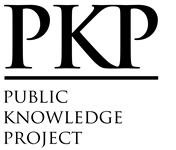Income Inequality, Poverty and Food Security in West Bengal, India
Abstract
The paper intends to study the nature of income inequalities, food security and poverty among different sub-groups of population in West Bengal, India. It has been found that inequalities in terms of share of total income and population exist both in case of agricultural and non-agricultural income irrespective of sub-groups. The contribution of agricultural income in the income profile is less than that of non-agricultural income which exhibits the deplorable condition of agriculture and thereby the non-agricultural sector has an immense scope for reduction of income inequality even the fact remains that about 65 per cent of the rural population engages in agriculture. The study observed that so far as food security is concerned, though India achieved self-sufficiency in food grain production since 1970s, the achievement did not percolate down to masses. These deprivations are very acute with differentiated degrees of severity in almost all sub-groups except medium farms. Inequality in income is much higher than that of food insecurity in all sub-groups which is in conformity with Engel’s Law. While comparing the depth of food insecurity with poverty, it reveals that though the severity of poverty as well as food insecurity is highest in small farms, but these two do not keeping same connotations for the marginal and landless households. Hence it comes to the consequence that the severity of food insecurity not only depends on the severity of poverty but on some other factors too.
Full Text:
PDFReferences
Alesina, A., & Perotti, R. (1996). Income distribution, political instability and investment. European Economic Review, 40(6), 1203-1228. http://dx.doi.org/10.1016/0014-2921(95)00030-5
Benor, D., & Baxter, Ml. (1984). Training and Visit Extension. World Bank Publications 1818 l H Street, N.W. Washington D.C. 20433, USA.
Bhalla, G. S., & Singh, G. (1997). Recent development in Indian agriculture: A state level analysis. Economic and Political Weekly, 32(13), A2-A18.
Bhattacharya, Pranab Kumar. (2007). 25 years of West Bengal economy. In Raj Kumar Sen and Asis Dasgupta (Eds.), West Bengal Today – 25 years of Economic Development. Deep and Deep Publications Pvt. Ltd., New Delhi.
Bruno, Michael, Martin Ravillion, & Lyn Squire. (1996). Equity and growth in developing countries: Old and new perspectives on the policy issues. Policy Research Working Paper, No. 1563. The World Bank. Washington, D.C.
Chattopadhyay, Apurba Kumar. (2005). Distributive impact of agricultural growth in rural West Bengal. Economic and Political Weekly, 40(53), 5601-5610.
Clerke, G. L., & Colin, X. H. Zon. (2003). Finance and income inequality: Text of alternative theories. World Bank Policy Research Working Paper 2984, Washington D.C., World Bank.
FAO. (2006). Inequality Analysis The Gini Index, EASYPol Module 040. Retrieved from http://www.fao.org/tc/easypol.
Government of India. (1989). Results on Per Capita and Per Consumer Unit Per Diem Intake of Calorie, Protein and Fat and Perceptions of the People on Adequacy of Food. Sarvekshana, 13(2).
Government of India. (1993). Report of the Expert Group on Estimation of Proportion and Number of Poor. Perspective Planning Division, Planning Commission, New Delhi.
Government of India. (1996). Nutritional Intake in India NSS 50th Round July 1993-June 1994 Fifth Quinquennial Survey on Consumer Expenditure. Report No. 405, National Sample Survey Organisation, Department of Statistics, New Delhi.
Government of India. (2007a). Public Distribution System and Other Sources of Household Consumption 2004-2005, Volume I, NSS 61st Round (July 2004- June 2005). Report No. 510(61/1.0/3), National Sample Survey Organisation, Ministry of Statistics and Programme Implementation, New Delhi.
Government of India. (2007b). Poverty Estimates for 2004-05, Press Information Bureau, New Delhi, India.
Konar, D. N. (2001). Production of food grains in West Bengal: The scenario of the post liberalization decade. Economic Affairs, 46(4th qtr.).
Pal, P. (2007). Development pattern in West Bengal since 1980s. In Raj Kumar Sen and Asis Dasgupta (Eds.), West Bengal Today – 25 years of Economic Development. Deep and Deep Publications Pvt. Ltd., New Delhi.
Peters, M. M., & Shapouri, Shahla. (1997). Income inequality and food security. In Food Security Assessmernts – Situation and outlook series. International Agriculture and Trade Report.
Rawal, V., & Swaminathan, M. (1998). Changing Trtajectories: Agricultural Growth in West Bengal: 1950 to 1996. Economic and Political Weekly, 33(40), 2595-2602.
Sawant, S. D., & Achuthan, C. V. (1995). Economic growth across crops and regions: Emerging trends and patterns. Economic and Political Weekly, 30(2).
Suryanarayana, M. H. (1995). Growth, poverty and levels of living: hypotheses, methods and policies. Journal of Indian School of Political Economy, 7(2).
Suryanarayana, M. H. (1996). Food security and calorie adequacy across states: implications for reform. Journal of Indian School of Political Economy, 8(2).
Suryanarayana, M. H. (1997). Food security in India: Measures, norms and issues. Development and Change, 28(4), 771-789. http://dx.doi.org/10.1111/1467-7660.00064
Verma, Prasoon. (2006). Agriculture as an industry. Yojana. 50(9).
DOI: https://doi.org/10.5296/jsss.v1i1.4170
Refbacks
- There are currently no refbacks.
Copyright (c) 2013 Snehasish Karmakar, Debashis Sarkar

This work is licensed under a Creative Commons Attribution 4.0 International License.
Journal of Social Science Studies ISSN 2329-9150
Copyright © Macrothink Institute
To make sure that you can receive messages from us, please add the 'macrothink.org' domain to your e-mail 'safe list'. If you do not receive e-mail in your 'inbox', check your 'bulk mail' or 'junk mail' folders. If you have any questions, please contact: jsss@macrothink.org
-----------------------------------------------------------------------------
